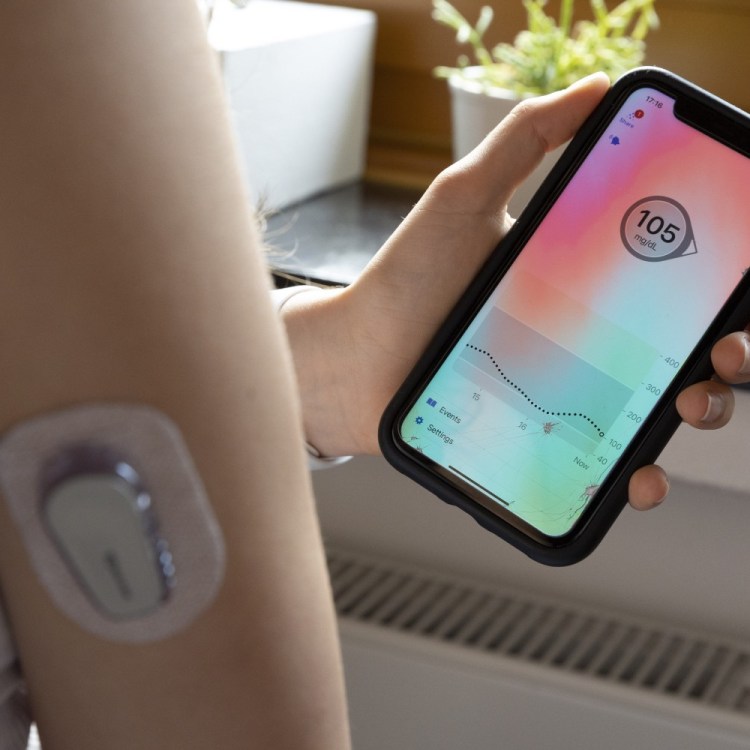I know there’s nothing punk rock about planning your week around American Health Association guidelines. But if you want to live longer, and better, it’s a good idea to heed the AHA’s advice once in a while. So they want to replace your cigarettes with blueberries; they’re just looking out.
One of the AHA’s greatest hits? Get 150 minutes of exercise a week. It seems a little daunting, and maybe it is. If you can only find a few days a week to exercise, you owe three 50-minute chunks of activity. But spread out over five days or more, those chunks get tinier, and easier to incorporate into your routine. They get much tinier if you exercise in a precise way.
According to the AHA, you can now cut down your weekly exercise total to just 75 minutes a week with workouts of “vigorous intensity.” These workouts count the same as those of moderate intensity, yet can be completed in half the time. That’s three 25-minute chunks a week, or just 10 minutes a day.
Time Is on Your Side
Over and over again, the most-cited reason that people don’t exercise is “lack of time.” But it’s difficult to argue with workouts shorter than an episode of The Office — and it’s harder still to argue with the mountain of research published in recent years by exercise scientists.
“Like many forms of exercise, high-intensity interval training [HIIT] can elicit improvements in cardiorespiratory fitness, which is an important marker of longevity and risk for developing many chronic diseases,” says Martin Gibala, Ph.D., a professor of kinesiology at McMaster University in Hamilton, Ontario. “HIIT can also improve metabolic fitness, which reflects the capacity to oxidize or ‘burn’ fuels like sugars and fats to produce cellular energy, and in turn is linked to blood markers of health such as insulin sensitivity.”
In addition to his scholarly articles, Gibala published a book a few years back called The One-Minute Workout, which explores his research and shows that dedicated interval training can offer fitness benefits for sedentary subjects — in 80% less time. Gibala called his method “ultralow-volume exercise” and detailed a workout protocol involving:
- 20 seconds of all-out, high-intensity exercise (cycling, running, burpees, etc.)
- Followed by two minutes of low-intensity recovery
- Repeat this cycle for three intervals (making one full minute of high-intensity effort)
Gibala stresses that a specific type of exercise or equipment isn’t so essential here. “[Try] running uphill, stair climbing, bodyweight exercises,” he says. The real key is tapping into the requisite intensity.
“Some of the shortest workouts have involved as little as two or three 10-to-20-second sprints within a total time commitment of 10 minutes,” he says. “Other studies have used four-second sprints, repeated 30 times with as little as 15 seconds of recovery over a total time commitment of about 10 minutes. And recent studies have started to examine ‘exercise snacks,’ which are isolated bouts of vigorous effort lasting less than one minute and performed sporadically a few times per day.”

How Short Workouts Got So Big
That “exercise snacks” concept is gaining steam. In fact, it recently made the cultural leap from medical journals to the branded world: In an ad for Asics, called “The Desk Break,” Brian Cox exhorts employees to get up, take five from the “deadliest thing in the office” and go “run, jump, roller skate…whatever.” People are starting to understand and embrace the fact that a little movement goes a long way.
But exercise scientists have been at this for decades. As Brad Schoenfeld, a professor in exercise science at Lehman College in the Bronx, New York, points out, “From a resistance-training standpoint, the concept of short workouts dates back to the early 1970s, when Arthur Jones promoted a one-set-to-failure program. Interval training cardio workouts, which consist of brief intervals of very hard cardio bouts, have been around since the 1950s.”
One of the most famous short-workout schemes is called the Tabata Protocol. If you’ve ever been on a Peloton, you’ll know you can literally filter by the term. “Tabata” refers to Dr. Izumi Tabata, a Japanese exercise scientist, who, in the 1990s, devised a HIIT program based on the teachings of an Olympic speed skating coach, Koichi Irisawa.
Tabata’s workout consists of 20-second intervals of intense effort (on the Peloton, you’re usually sprinting up a hill), interspersed with 10-second rests. It’s difficult to even call it rest, though. I’ve performed Tabata workouts, many times, and it’s more of a panting respite before the pain resumes. The conventional Tabata Protocol calls for eight rounds of this, which equals four minutes. Trainers can then stack the four-minute segments to create a longer workout of 12 or 16 minutes.
For Schoenfeld, whose research has focused primarily on muscle hypertrophy, it’s clear that “substantial gains in muscle strength and size can be achieved with relatively low volume resistance workouts.” But he also emphasizes that cardio interval workouts can potentially foster cardiorespiratory fitness better than “longer duration steady-state cardio workouts,” or exercises categorized under Zone 2, another concept that’s been studied for years, but only attained a level of cultural ubiquity over the last few years.
It’s All About Optionality
How should we reconcile the short workout craze with the Zone 2 craze? How many exercise snacks ought one munch on in a given day or week? And is a specific sort of programming better for longevity purposes?
Answering these questions is contingent on an individual’s fitness goals, weekly schedule and tolerability. (For instance, the Tabata Protocol probably isn’t for everyone. It’s just really hard. But virtually all of us could and should add exercise snacks to our workdays.) Gibala counsels balance: “A well-rounded approach that varies frequency, intensity, duration and type of activities (continuous versus intermittent, aerobic versus resistance, etc.) is generally best.”
He notes that in the endurance world, athletes spend about 80% of their time doing Zone 2 workouts, and the other 20% performing interval training. But then again, endurance athletes — by definition — are primarily concerned with aerobic fitness and have little trouble making time to exercise in a given week. (Lengthy workouts are kind of their whole thing!) Still, it’s telling that they make time for both; interval training is too valuable to omit from any workout programming. And if you only have time for interval training, well…we now know that’s time well-spent.
Ultimately, there’s opportunity in this sort of optionality. When I ask Schoenfeld how adults should weigh short workouts against Zone 2 sessions, he replies, “There is no cookie-cutter answer to this question…the integration of concepts is the ‘art’ of training.”
I like that: practicing a physical fitness is an art. It’s a mishmash of acquired knowledge, mixed with effort, which yields unpredictable results: often unsatisfying, sometimes gratifying. There’s no such thing as a perfect routine that you’ll repeat over and over again until you die. Bodies change. The brain gets bored. So long as you remain an active participant in the process, you get to keep tinkering; you get to retain the workouts that work, and reinvent your expectations for exercise.
In this case, it’s pretty simple: exercise doesn’t have to take long. Delete the idea from your brain. Your workout can be short, sweaty and sweet. In the interest of catalyzing your next routine, I’ve sorted five different short workouts below, from one minute in length all the way up to 20 minutes. All are based on prominent short workout examples in the exercise-science sphere, and one was expressly designed for InsideHook by Rob Butler, who holds a Ph.D. in biomechanics and movement science, is the former director of performance for the St. Louis Cardinals and currently works as the director of implementation science at Uplift Labs.

The Short Workout Guide
1 Minute: Exercise Snacks
According to a study out of the University of Sydney, practicing three to four bursts of vigorous intermittent lifestyle physical activity (VILPA) per day is linked to a “40% reduction in all-cause and cancer mortality risk and a 49% reduction in CVD mortality risk.” That’s no joke. Exercise snacks are also highly effective in improving glycemic control, if deployed before meals.
The workout: Honestly, you may already be adding these to your day without even thinking about it — especially if you’re an urban commuter. Natural examples of exercise snacks include chugging up stairs or chasing after a train. If you want to be more intentional about it, try bodyweight squats, high knees, jumping jacks. Don’t overthink it. Just shake yourself loose for a minute or so…then do it again in a few hours.
7 Minutes: Scientific 7-Minute Workout
Devised by exercise scientists at the American College of Sports Medicine, the “Scientific 7-Minute Workout” is a high-intensity circuit that doesn’t require a single weight. This one first made the rounds back in 2013, as short workouts began to puncture the cultural consciousness. It still holds up.
The workout: This routine consists of 12 different exercises — from jumping jacks to push-ups to wall sits — performed for 30 seconds each, with 10 seconds of rest in between. The entire circuit targets major muscle groups (always a surefire way to get bang for your buck in a workout), while keeping your heart rate elevated. I love the mix of plyometric and isometric here, and love most of the moves, too. Consider subbing mountain climbers for the conventional abdominal crunch, which has gone out of vogue over the last decade.
10 Minutes: Brain-Boosting Walk
Yeah, perhaps not a workout as you’d typically define it. But a short walk packs serious potential; according to Dr. Wendy Suzuki, a neuroscientist at New York University, just 10 minutes of walking “has been shown to have significant improvements on mood state, significantly decreasing anxiety and depression levels and also increasing positive mood states.” In an interview on the Ted Radio Hour on NPR last year, Suzuki called exercise “a supercharged 401(k) for your brain,” which is awesome. She concluded: “And it’s even better because it’s free.”
The workout: This one needs to be a nonnegotiable part of your workday. We’ve been beating this drum for years. Don’t fall back on your commute here, either; you and I both know that hour is too mission-oriented, and swimming in cortisol. Find 10 minutes in the day where you can properly walk — no phone, at a pace that makes sense for you, ideally amidst some trees.
15 Minutes: Tabata Protocol
Hopefully you’re well-acquainted with the Tabata Protocol by now, but as a refresher, the quintessential HIIT workout involves 20-second bursts of exercise, followed by 10 seconds of rest, repeated eight times. That’s pretty sweaty all on its own, but you can easily stack it into a longer workout.
The workout: In this case, I’m suggesting completing the Tabata Protocol three times (12 minutes of exercise) with a minute of rest in between each round (15 minutes for the full workout). We have resistance moves and stair-climbs represented elsewhere in this guide — so let’s put this workout on the bike. A classic exercise bike is often the test equipment of choice in labs, and it’s a great way to ramp up the perceived rate of exertion. Toggle the resistance (or incline) and push yourself accordingly, to make sure you’re going hard in each 20-second effort.
20 Minutes: Bespoke Bodyweight Circuit
We asked Rob Butler to put together a simple and bespoke bodyweight circuit. He came back with four moves — which target core stability, lower-body strength, upper-body endurance — and some extra wisdom on short workouts: “One of the best biomarkers for long-term health and wellness is the speed at which we move.” This workout aims to improve your agility and mobility. Just make sure to warm up and cool down accordingly. (He recommends dynamic movements to start, like step-ups or Carioca, and gentle ones to finish, like cat-cow or trunk rotations.)
The workout: I’ve included the workout in full below. It’s yet another bargain, at just 20 minutes.
Stabilize Core: Side Plank
- 3 x 20 seconds each side, with 20 seconds rest between sides.
- Focus on maintaining core stability and deep, controlled breathing.
- Make it harder: Add a leg lift or arm lift, or hold for a longer duration.
- Simplify: Drop your knees to the floor or reduce the hold time.
Lower-Body Focus: Split Squat
- 3 x 10 reps for each side.
- Ensure proper alignment with the back foot naturally stepping backward.
- Make it harder: Hold a weight at your chest or elevate your front foot.
- Simplify: Hold the lowest position for two to three seconds before standing, or bring your back foot closer.
Upper-Body Focus: Push-Up Pyramid
- Set a timer for 4 minutes and follow a descending pyramid of push-ups: 10, 9, 8, 7…down to 1. Rest 20-30 seconds between sets.
- Make it harder: Reduce recovery time or stack one foot on top of the other.
- Simplify: Perform push-ups from your knees or reduce the range of motion.
Total-Body Focus: Bear Crawl
- 4 x 10 “steps” forward and 20 steps backward, with 20 seconds rest between repetitions.
- Make it harder: Narrow your hand and foot placement or wear a weighted vest.
- Simplify: Take smaller steps or flip the forward and backward step count.
The Charge will help you move better, think clearer and stay in the game longer. Subscribe to our wellness newsletter today.

























